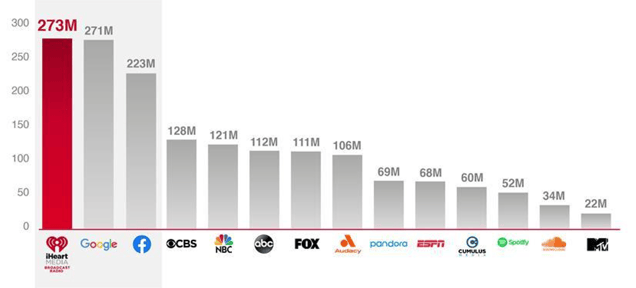Over the last five years, Spotify and Pandora have experienced a decrease in their already small ad-supported audiences. This decline is surprising to many marketers due to Spotify's and Pandora's increased brand recognition in recent years. However, despite perceptions, both platforms have small ad-supported audiences and limited reach because most listeners utilize ad-free accounts while radio remains at the top.
A recent Share of Ear study shows that compared to Q2 2016, Spotify’s Q2 2021 ad-supported audience shares dropped from 1.6% to 1.4%. And Pandora’s ad-supported audience was even more affected as it fell from 7.1% to 3.8%. On the other hand, the reach of radio continues to surpass that of all other audio platforms, including both ad-supported Spotify and Pandora. Notably, radio's reach exceeds a few more prominent mediums like Facebook, Google, and television.
The same study also found that people who listen to Spotify and Pandora hear ads only about half of the time. In other words, your customers are only hearing half of the ads you are paying for. Broadcast radio has much higher audibility at 83%, so not only does radio have a more expansive reach, but it is also reaching real listeners.
The Power of Radio
Despite perceptions, there is no denying the power of radio — 92% of Americans listen to the radio every week. Plus, the total time spent listening to broadcast radio is more than triple that of streaming services. AM/FM radio also dominates in-car listening with an 88% share of ad-supported audio time. And on smart speakers, radio leads with a 39% share.
Technology has undoubtedly changed listening habits, but AM/FM radio continues to be the primary that people use to consume content. If you are new to radio and want to learn more, download our Radio Buying Quick Start Guide.






